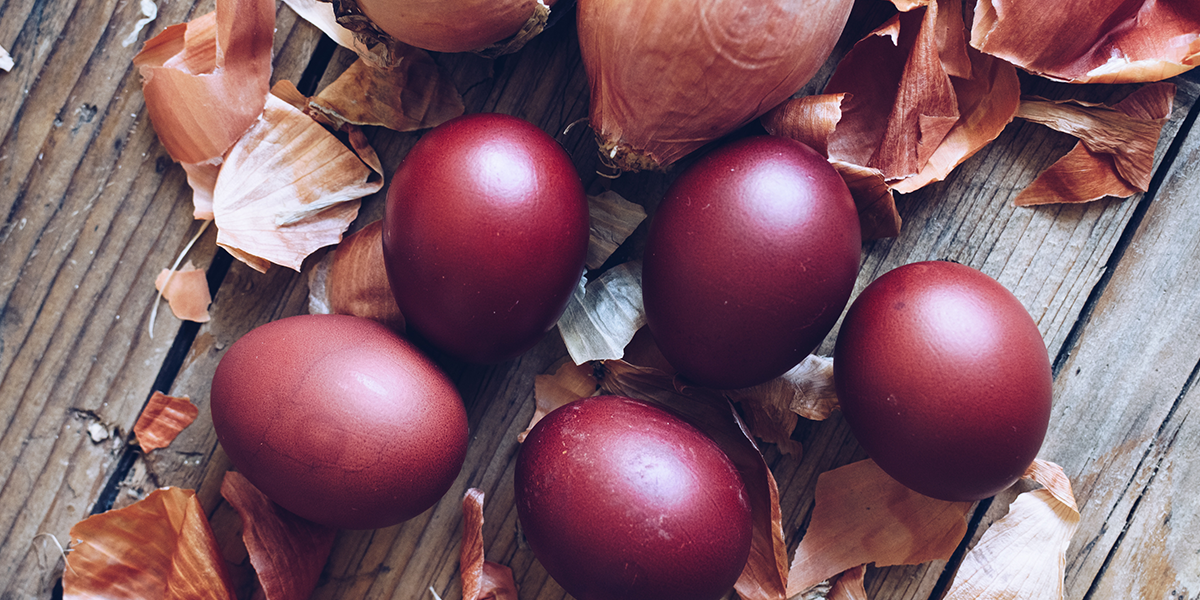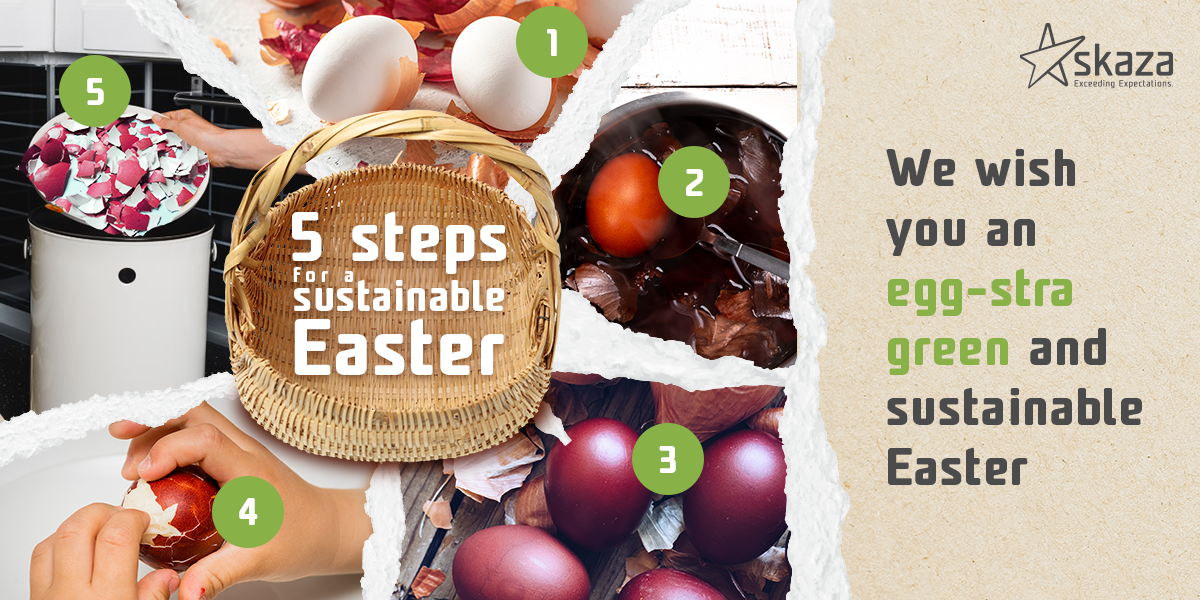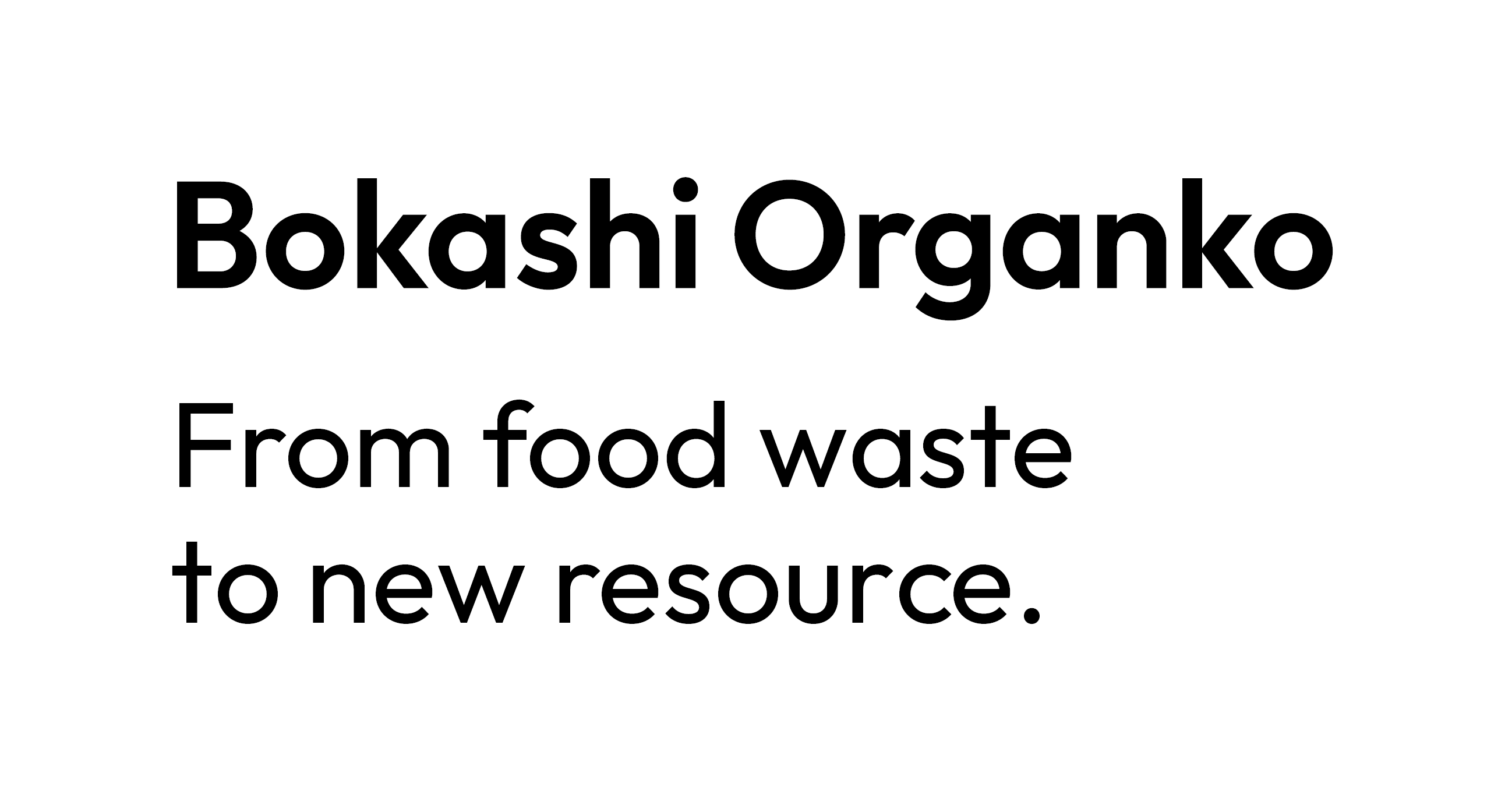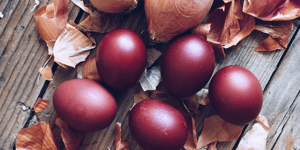Spring is here, and the preparations for celebrating Easter are in full swing despite the ongoing pandemic, which heavily affects our everyday lives. This year, more than ever, we have the opportunity to rethink what this holiday means to us and how to celebrate it in an eco-friendlier way. To make it egg-stra green, we have prepared a few tips on how to celebrate a more sustainable Easter.
Decorating eggs is one of the oldest traditions connected with these spring festivities. But like celebrating any other holiday, in recent decades, commercial aspects have also taken over Easter. It is now possible to buy egg-coloring kits which include everything you need for this family fun activity. However, we encourage you to take a step back this year and return to basics.
Use natural dyes to color Easter eggs
Celebrating a more sustainable Easter is not complicated at all. We just need to look back at what our grandmothers did. There were no artificial colors you could buy in their time. Instead, they took what nature gave them. Most commonly, they used leftover onion skins or red cabbage. Nowadays, you can also use turmeric (curcuma) or chilly to spice things up.
How does it work? Well, the procedure is very easy, and anybody can do it at home.
- First, you need to boil some water.
- When the water boils, reduce the heat and add a coloring agent of your choice. We will talk more about different agents and the colors they produce a bit later.
- Simmer for at least 30 minutes. You can do it longer if you want to get a stronger color tone.
- Then strain the liquid into a jar and allow it to cool down to room temperature.
- Add a bit of white vinegar and stir the dye.
- Add boiled eggs.
- Leave the eggs to soak in the dye for a few hours. Best to leave them overnight.
There you have it. Your sustainable Easter eggs are ready to decorate a table, play egg hunt or simply eat them at breakfast.
 What coloring agents to use?
What coloring agents to use?
As promised, let’s have a look at some of the most widely available vegetables from your garden and substances found in your kitchen you can use to dye sustainable Easter eggs.
- Onion skins are probably the most known and widely used natural element to dye Easter eggs. You will need about seven yellow onions, which will make eggshells look reddish.
- Another popular vegetable is red beets, which produces a lovely purple dye. However, you will need to chop it down to small cuts before putting it into boiling water in order to get the color out.
- If you want to get a pretty pastel blue color, you can use red cabbage. This, too, needs to be shredded into pieces to produce enough dye.
- For a light green to gray color, use spinach leaves.
- For more exotic colors - like orange, for example - you can take three tablespoons of chili powder and mix it into the boiling water.
- Last but not least - to make Easter eggs shine in yellow color, use three tablespoons of turmeric or curcuma.

Next step towards sustainable Easter
Now that the eggs are dyed and you are left with a bunch of leftovers think about what to do with them in order to make this year’s Easter even greener. Here’s an idea - since Easter is all about rebirth and creating new life, why not take this opportunity to start home composting.
What better way to celebrate sustainable Easter than turning all the bio-waste into a beneficial fermentation mass? It will enrich your garden soil and accelerate the growth of your crops. For an easy start, consider getting a convenient Bokashi Organko composter, which is just the perfect tool for everyone who wants to lead a zero-waste lifestyle and contribute towards general sustainability on our planet.


